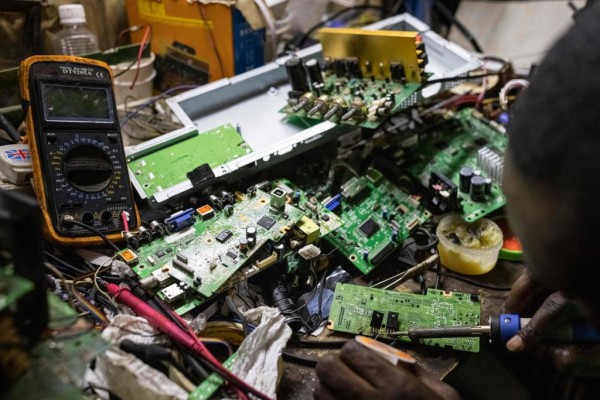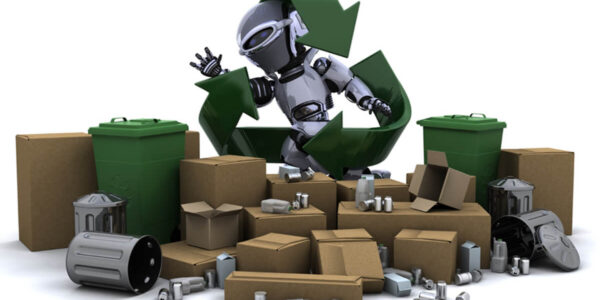As the digital era progresses, our dependence on electronic devices grows exponentially. From smartphones to smart home systems, laptops to tablets, the conveniences of modern technology are evident in every aspect of daily life. However, as these gadgets become obsolete, they contribute to a rapidly growing problem: electronic waste, or e-waste. Unlike more visible environmental issues, such as plastic pollution or deforestation, e-waste often goes unnoticed, yet its impact is profound and far-reaching. In this article, we’ll explore how e-waste is silently emerging as a major environmental crisis, the unique challenges it presents, and why urgent action is needed to address this looming threat.
The Scale of the E-Waste Problem
The sheer volume of e-waste being generated globally is staggering. According to the Global E-Waste Monitor, over 53 million metric tons of e-waste were produced worldwide in 2019, and this figure is projected to reach 74 million metric tons by 2030. This makes e-waste one of the fastest-growing waste streams in the world.
What Constitutes E-Waste?
E-waste encompasses a broad range of discarded electronic devices, from large household appliances like refrigerators and washing machines to smaller items such as smartphones, batteries, and circuit boards. The common thread among all these items is that they contain a mix of reusable materials and hazardous substances, including:
-
Precious Metals:
Gold, silver, palladium, and other rare elements are often used in electronic components.
-
Toxic Chemicals:
Lead, mercury, cadmium, and brominated flame retardants can be found in various parts of electronic devices.
-
Plastics and Other Non-Biodegradable Materials:
Many electronic items are encased in plastics that do not decompose.
The Environmental Impact of E-Waste
While e-waste might seem less visible compared to piles of plastic or smog-filled skies, its environmental impact is substantial and multifaceted:
Toxic Leaching and Soil Contamination:
When e-waste is improperly disposed of, such as in landfills, toxic chemicals can leach into the soil and groundwater. Lead, a common component in many electronics, can cause severe damage to ecosystems, affecting plant growth and contaminating the food chain. Over time, this can lead to widespread soil degradation, rendering large areas unsuitable for agriculture.
Air Pollution from Informal Recycling:
In many developing countries, e-waste is processed in informal recycling sectors where electronic devices are manually dismantled, often burned, to extract valuable metals. This practice releases toxic fumes into the air, including dioxins and polycyclic aromatic hydrocarbons (PAHs), which contribute to air pollution and pose significant health risks to local communities.
Water Pollution and Marine Ecosystems:
Improper disposal of e-waste also threatens water bodies. When electronic waste is dumped into rivers or oceans, harmful substances like mercury can dissolve in water, poisoning aquatic life. Mercury is particularly insidious because it bioaccumulates, meaning it becomes more concentrated as it moves up the food chain, ultimately affecting large marine animals and humans who consume seafood.
The Global E-Waste Trade:
One of the lesser-known aspects of the e-waste crisis is the global trade of discarded electronics. Many developed countries export their e-waste to developing nations under the guise of “donations” or “reusable goods.” However, a significant portion of these shipments contains irreparable or obsolete electronics that end up in landfills or informal recycling centers. This global movement of e-waste perpetuates environmental injustice, as the environmental burden is shifted from wealthy nations to poorer ones, which often lack the infrastructure to manage it safely.
Challenges in Addressing E-Waste
The complex nature of e-waste presents several challenges that make it difficult to manage effectively:
Lack of Awareness and Data:
Despite its scale, e-waste is not widely recognized as a critical environmental issue. Many consumers are unaware of the proper methods for disposing of old electronics, and there is a lack of comprehensive data on e-waste generation and recycling rates, particularly in developing countries. This lack of awareness and data hampers efforts to develop effective policies and recycling programs.
Technical Difficulties in Recycling:
Recycling e-waste is more challenging than recycling other materials like paper or plastic. Electronic devices are made up of a complex mix of materials, including metals, plastics, and hazardous chemicals. Separating and safely processing these materials requires specialized equipment and expertise, which are not always available, especially in developing regions.
Economic Disincentives:
There is often little financial incentive for proper e-waste recycling. The process of safely extracting and recycling valuable materials from electronic devices can be costly and labor-intensive. Moreover, many electronic devices are designed in ways that make them difficult to disassemble and recycle, further discouraging recycling efforts.
The Path Forward: Strategies for Mitigating the E-Waste Crisis
To effectively tackle the e-waste crisis, a multifaceted approach is needed, involving consumers, manufacturers, and governments:
Designing for the Environment:
Manufacturers need to embrace the concept of “design for the environment,” which involves creating products that are easier to repair, upgrade, and recycle. By designing electronics with modular components that can be easily replaced or recycled, manufacturers can help reduce the overall volume of e-waste.
Strengthening Legislation and Enforcement:
Governments must implement and enforce stronger regulations around e-waste management. This includes restricting the export of e-waste to countries without adequate recycling infrastructure, establishing clear standards for e-waste disposal and recycling, and encouraging the development of domestic recycling industries.
Promoting Consumer Responsibility:
Consumers also play a critical role in reducing e-waste. By opting to repair or upgrade devices instead of replacing them, donating working electronics, and properly recycling obsolete ones, consumers can help reduce the environmental impact of their electronics. Awareness campaigns and education programs can help inform consumers about the importance of proper e-waste disposal and the resources available to them.
Expanding Formal Recycling Infrastructure:
Developing countries need support to build formal recycling infrastructure. International cooperation and investment can help establish safe, regulated recycling facilities that provide jobs and reduce environmental harm. By investing in formal recycling sectors, we can create a more sustainable and equitable global approach to e-waste management.
Conclusion: An Urgent Call for Action
E-waste may be out of sight for many, but its impact on our environment, health, and society is growing daily. As we continue to rely on electronic devices, it is crucial that we address this hidden crisis with urgency and innovation. By adopting a more responsible approach to e-waste, we can turn a looming environmental disaster into an opportunity for sustainable development. At Dream E-Waste, we are dedicated to leading the charge in responsible e-waste management, providing solutions that prioritize environmental health, economic efficiency, and social equity. Join us in our commitment to a cleaner, more sustainable future by properly managing your electronic waste today!


